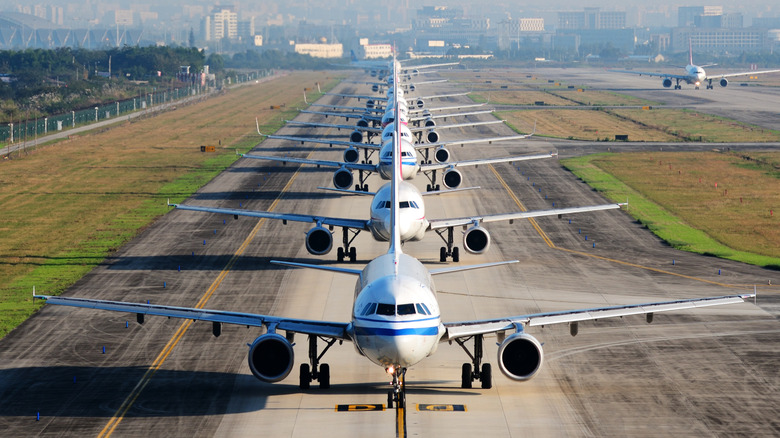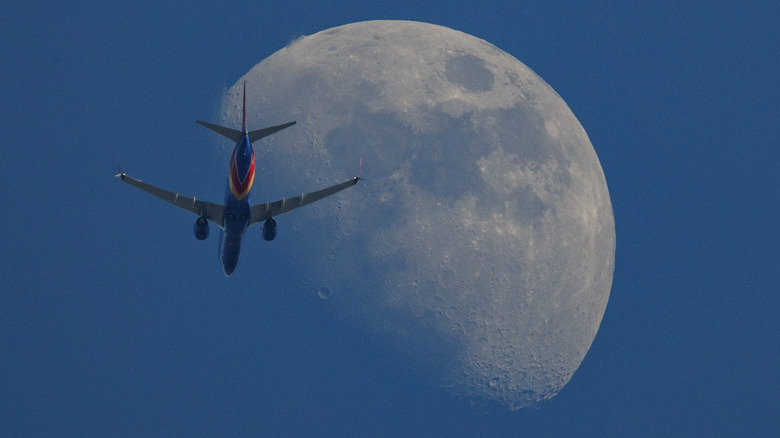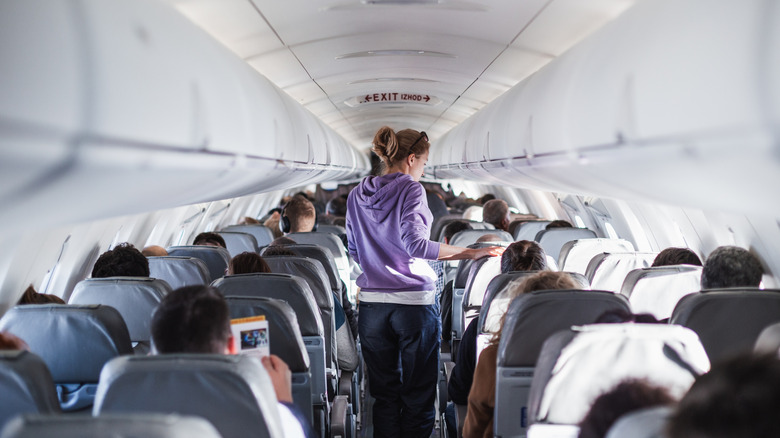
Boeing makes all sorts of things: Passenger airliners, fighter jets, satellites, and apparently, a crystal ball. The manufacturing giant's resident wizard has looked far into the future, to the distant year 2044, and returned with a series of wild claims and tales. He believes that the world of tomorrow will be kind to the aviation industry, as he counted nearly 50,000 commercial planes in the air, a nearly 83% increase in the number flying today.
Alright, so it's not a time-traveling wizard. Boeing
employs a team of business types to do an extensive industry forecast, the Commercial Market Outlook (CMO), which it is kind enough to release to the public (check out its nifty interactive version). Still, getting an insight into what the skies of 2044 will look like is pretty cool. The big picture is that air traffic will continue to grow in popularity as emerging markets build more infrastructure and the global middle class expands.
Indeed, even though every single region in the world is expected to increase its commercial plane fleet, the relative distribution of those planes will get a lot more even. Right now, North America dominates with 30% of the entire world's non-military aircraft; Eurasia sits pretty at 25%, while China claims 16% (everybody else is at 6% or less). But by 2044, Boeing predicts that North America, Eurasia, and China will all have clustered together at around 20% each. So while everyone is buying new planes, the big growth is coming out of Asia. In particular, Southeast Asia is going to double its relative share of planes, to 10% of the global total.
Read more: These Supercars Lose Value So Quickly, They're Almost A Steal
What We'll Be Flying, And Where We'll Be Flying Them

So, what will tomorrow's airlines be buying? By and large, narrow-body single-aisle designs, which Boeing thinks will make up a whopping 76% of the 43,600 new planes of the next 20 years. That will push the form factor's share of the global fleet to 72%, from an already impressive 66% today. It's kind of insane how much the narrow-body jet has just swallowed everything else whole. That will mostly come at the expense of regional jets, which both decrease in absolute terms and shrivel in relative terms, from 9% today to just 3% in 2044.
Those planes will of course be crisscrossing the world, but where they fly will be a bit different than today. For one thing, developing countries are expected to boom over the next two decades, and the bulk of flight route growth will be within or to-and-from those nations. And while today the most trafficked routes in the world are North American domestic, in the future, Boeing believes that Chinese domestic will grab the top spot.
One of the stranger findings of the report is that travel between those two regions will oscillate wildly; believe it or not, today, Chinese-American routes are the least traveled in the world, despite being much more popular just ten years ago. That popularity will return, somewhat, by 2044. Geopolitics, maybe? Good luck predicting that one, Boeing wizard.
More Passengers Than Planes

A pervasive theme of the report, across every single region, is that travel growth will outpace both overall economic growth (it's one of the first things people will spend disposable income on) and also fleet growth. The latter puts a strain on the airlines, since the number of passengers will increase faster than the number of planes they can put them on.
In fact, plane production is one of the sore spots here, which matters just a little bit to the report's author, Boeing. In 2024, the manufacturers actually delivered 5% fewer planes than they did back in 2012... even though air traffic grew by fully 60% in the same time frame. Yikes! Lingering consequences from the pandemic and its supply chain shenanigans are partly to blame, but that's tough.
Airlines are compensating by keeping aging planes around longer and flying them for more hours, but eventually, they're going to need some new wings. Of the 43,600 planes that the industry is predicted to deliver by 2044, half of them will replace older ones and the other half will constitute market growth. In the previous two decades, 70% of deliveries went to market growth. Arguably, that's still a sign of health, though: There's such a demand for planes going forward that companies just aren't parting with the ones that they have.
O Boeing wizard, whither shall I go in 2044? What kind of man will I be? Whatever did happen to Boeing's 7X7 numbering scheme? Tell me all you know, for I have so many questions, and so little time.
Want more like this? Join the Jalopnik newsletter to get the latest auto news sent straight to your inbox...
Read the original article on Jalopnik.













